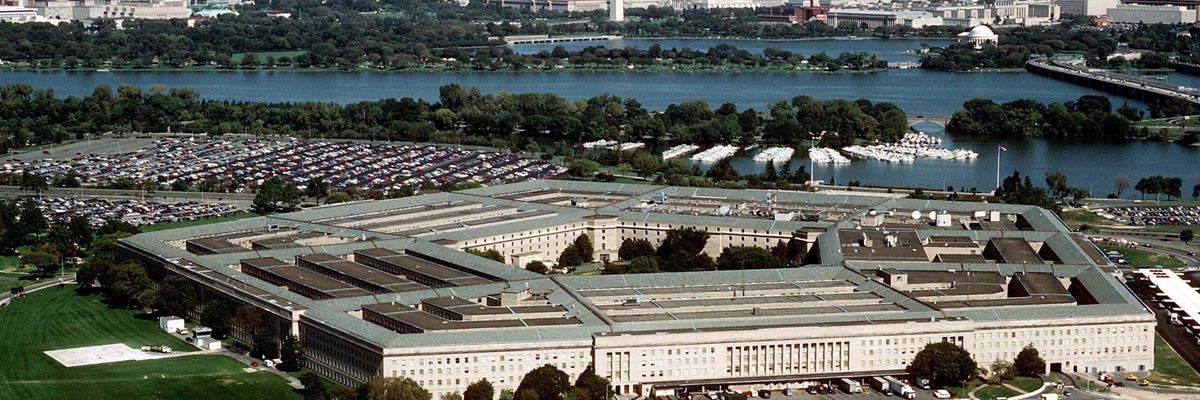In 2006, the Environmental Protection Agency released a report titled, “Turning Bases Into Great Places: New Life for Closed Military Facilities.” Its purpose was to create a sort of “how-to” guide for military communities that found themselves on the 2005 Base Realignment and Closure list and its contents eerily resembled a retirement home pamphlet, complete with animated cartoons of people happily strolling on a boardwalk next to a pond. One text bubble even asks, “how should communities prepare for life after closure?”
But the report’s central message is “don’t panic” — even though the future is uncertain, the base closure process can present hidden opportunities for defense communities. If a former base undergoes environmental cleanup, it can then be redeveloped into a trade port, a university, or even an international airport, recouping jobs lost in the closure. BRAC has done this successfully in the past, but this idea of “remediation, redevelopment, repeat” should be taken even further in what I call a “Green BRAC.”
Not unlike Myspace or ordering DVDs through Netflix, the base closure process was left behind in the mid-2000s. BRAC became something of a boogeyman in Washington amidst U.S. escalation in Iraq and Afghanistan. As the Assistant for BRAC Andy Napoli says, “you don’t want to sell a car and then realize you need it.” But the problem is that the Pentagon has been forced to become something of a car collector in the absence of Congress approving a formal base closure round. In 2017, the Pentagon estimated that it has 19 percent more facilities than it needs, but it lacks the authority to close excess domestic military bases.
BRAC is supported by a broad coalition of organizations ranging from the Center for American Progress to the American Enterprise Institute, and for good reason. First, the base closure process saves money. Altogether, the 5 previous rounds of BRAC from 1988 to 2005 save around $13 billion a year annually. Second, it makes our military more efficient. The base closure process aims to shave off about 5 percent of the military's 19 percent excess infrastructure. Savings and military efficiency are both important considerations for another round of BRAC, but there should be another one: the environment.
Environmental cleanup is a precondition to redevelopment. Too frequently, the Pentagon has allowed former bases to lie fallow because of high environmental remediation costs, meaning some military communities see no economic benefit to their local base closing. However, allowing a base to lie fallow isn’t an effective strategy for properties rife with “forever chemicals” such as per and polyfluoroalkyl substances, which can end up contaminating the groundwater of nearby communities over time.
To combat cases like this, a “Green BRAC” would place a property tax on military bases that the Pentagon decides to keep, further incentivizing remediation and redevelopment. For instance, a large base near a growing population center that is closed in a round of “Green BRAC” would likely have a higher property tax to incentivize the Defense Department to remediate and redevelop the land. “Location, location, location” is a famous mantra in real estate, and it should be no different in deciding rates for federal property tax for military bases. Doing so would prioritize the human security of defense communities and increase the number of positive examples of redevelopment.
Local military bases are the economic lifeline of defense communities. In Colorado Springs, Peterson Air Force Base is affectionately referred to as “Uncle Pete.” Another round of BRAC should do everything to prioritize redevelopment for defense communities.
The former Brunswick Naval Air Station exemplifies how this can be done. When it was placed on the 2005 BRAC list, the local area was projected to lose upwards of 6,500 jobs and $140 million of annual income by 2011. In response, the Navy spent around $4 million on environmental cleanup, making it suitable for redevelopment. By November of 2016, 1,213 jobs had already been created, $75 million in property valuation was added to the area, and $2.6 million was being generated annually. The land of the former Naval Air Station transformed into new business, technology industries, airport operations, alternative energy research, manufacturing and power generation, higher education, residential housing, recreation, and open space. If the Navy had decided to keep the property, none of those benefits would exist.
Flight Deck Brewing is a brewery located in the former small arms range of the redeveloped Brunswick Naval Air Station. On their website, Flight Deck says, “We’re the only brewery located in a former shooting range (that we know of). If you find another one, put us in touch — we’d love to start a club.” With so much excess infrastructure in the military, there should be a club for creative uses of redevelopment. Why not an ice hockey rink at a former Air Force hangar? Or incorporating a former army hospital into a university campus? At former Fort Lowry and Fitzsimons Army Medical Center in Denver, these have already been done. But the visibility of these places hails in comparison to the images of shuttered windows and lost jobs, in part because there are cases in which DoD maintains BRAC properties because of environmental remediation costs, preventing the opportunity of economic redevelopment.
Crucially, the alternative to BRAC is far worse. Without BRAC, the Pentagon is still forced to reduce personnel and cut costs, in a kind of “stealth” BRAC. Because it doesn’t allow for environmental cleanup or economic redevelopment, the ongoing “stealth” BRAC has all of the negative aspects of a base closure without any of the economic and environmental benefits. Seen in this light, it's understandable why an overwhelming majority of communities represented by the Association of Defense Communities prefer BRAC to the current alternative.
Even if the EPA’s guide resembled a brochure for Shady Oaks Retirement Village, we would be remiss to dismiss its central message. A restraint-oriented foreign policy should embrace a “Green BRAC,” prioritizing environmental remediation and redevelopment of military bases as part of its broader strategy of choosing human security over endless wars. If proper funding and incentives are given for environmental remediation, the base closure process can reinvent a local community rather than being the kiss of death it's made out to be.
















